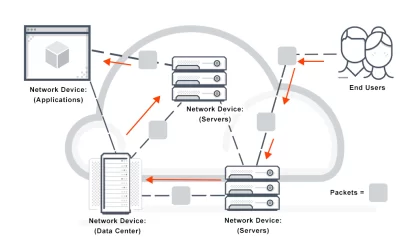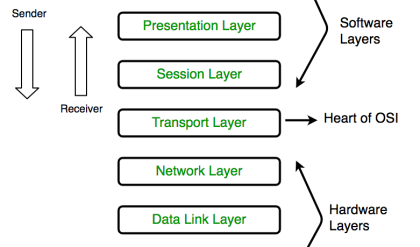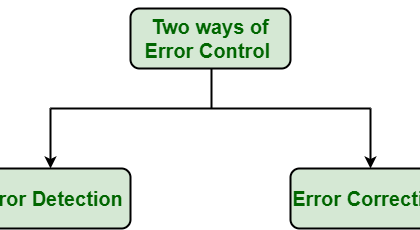Chapter Objective
Telecommunication deals with conveying information with electrical signals. This chapter prepares the telecommunication novice with some very basic elements of telecommunications. We are concerned about the transport and delivery of information. The first step introduces the reader to early signaling techniques prior to the middle of the nineteenth century when Samuel Morse opened the first electrical communication circuit in 1843. The next step is to present some of the basic concepts of electricity; this is mandatory for an understanding of how telecommunications works from a technical perspective. For an introduction to electricity, the user should consult Appendix A. After completion of this chapter, the reader of this text should have a grasp of electrical communications and its units of measure. Specifically, we will introduce an electrical signal and how it can carry intelligence. We will differentiate analog and digital transmission with a very first approximation. Binary digital transmission will then be introduced starting with binary numbers and how they can be represented electrically in a simple fashion. We then delve into conducted transmission. That is the transport of an electrical signal on a copper-wire pair, on coaxial cable, and then by light in a fiber-optic strand of glass. Radio transmission and the concept of modulation will then be introduced.
Signals In Everyday Life
Prior to the advent of practical electrical communication, human beings had been signaling over a distance in all kinds of ways. The bell in the church tower called people to religious services or “for whom the bell tolls”—the announcement of a death. We knew a priori several things about church bells. We knew approximately when services were to begin, and we knew that a long, slow tolling of the bells announced death. Thus we could distinguish one from the other, namely a call to religious services or the announcement of death. Let’s call lesson 1 a priori knowledge.
The Greeks used a relay of signal fires to announce the fall of Troy. They knew a priori that, a signal fire in the distance announced victory at Troy. We can assume that “no fire” meant defeat. The fires were built in a form of relay, where a distant fire was just visible with the naked eye, the sight of which caused the lighting of a second fire, and then a third, fourth, and so on, in a line of fires on nine hills terminating in Queen Clytemnestra’s palace in Argos, Greece. It also announced the return of her husband from the battle of Troy.
Human beings communicated with speech, which developed and evolved over thousands of years. This was our principal form of communication. However, it wasn’t exactly “communication at a distance.” Speech distance might be measured in feet or meters. At the same time there was visual communication with body language and facial expressions. This form of communication had even more limited distance. Then there was semaphore, which was very specialized and required considerable training. Semaphore was slow but could achieve some miles of distance using the manual version. Semaphore consisted of two flags, one in each hand. A flag could assume any one of six positions 45 degrees apart. The two flags then could have six times six, or 36, unique positions. This accommodated the 25-letter alphabet and 10 numbers. The letters i and j became one letter for the 26-letter alphabet.
A similar system used in fixed locations, often called signal hills or telegraph hills, was made up of a tower with a movable beam mounted on a post. Each end of a beam had a movable indicator or arm that could assume seven distinct positions, 45 degrees apart. With two beams, there were 49 possibilities, easily accommodating the alphabet, ten digits, and punctuation. The origin of this “telegraph” is credited to the French in the very late eighteenth century. It was used for defense purposes linking Toulon to Paris. There were 120 towers some three to six miles apart. It took 40 minutes to transmit signals across the system, with about three signals per minute. It was called the Chappe semaphore, named after its inventor. Weather and darkness, of course, were major influences. One form of railroad signals using the signal arm is still in use in some areas today.
The American Indian used smoke signals by day and fires at night. The use of a drum or drums for distance communication was common in Africa.
Electrical telegraph revolutionized distance communications. We accept the date of 1843 for its practical inception. It actually has roots well prior to this date. Many of the famous names in the lore of electricity became involved. For example, Hans Christian Oersted of Denmark proposed the needle telegraph in 1819. Gauss and Weber built a 2.3-km (1.4-mile), two-wire telegraph line using a technique known as the galvanometer mirror device in 1833 in Germany. Then there was the Cooke and Wheatstone five-needle telegraph, which was placed into operation in 1839 in the United Kingdom. All these names are very familiar to those of us who are well-read in the history of the development and application of electricity. The five-needle telegraph was meant for railroad application and used a code of 20 letters and 10 numerals to meet railway requirements.
It was while the United States Congress in 1837 was considering a petition to authorize a New York to New Orleans Chappe semaphore line that Samuel F. B. Morse argued for the U.S. government to support his electrical telegraph. The government appropriated the money in early 1843. The first operational line was between New York and Baltimore. Within 20 years the telegraph covered the United States from coast to coast. The first phase of electrical communications was completed. It revolutionized our lives.






Comments are closed.